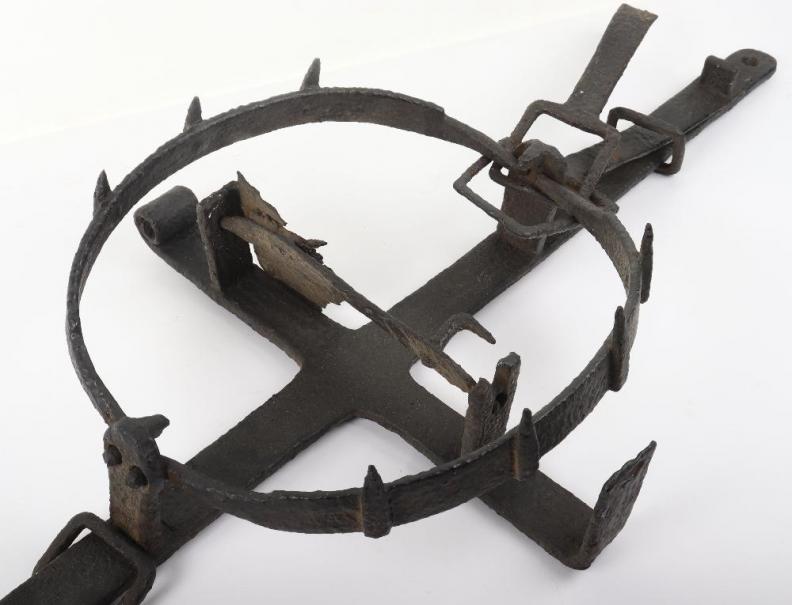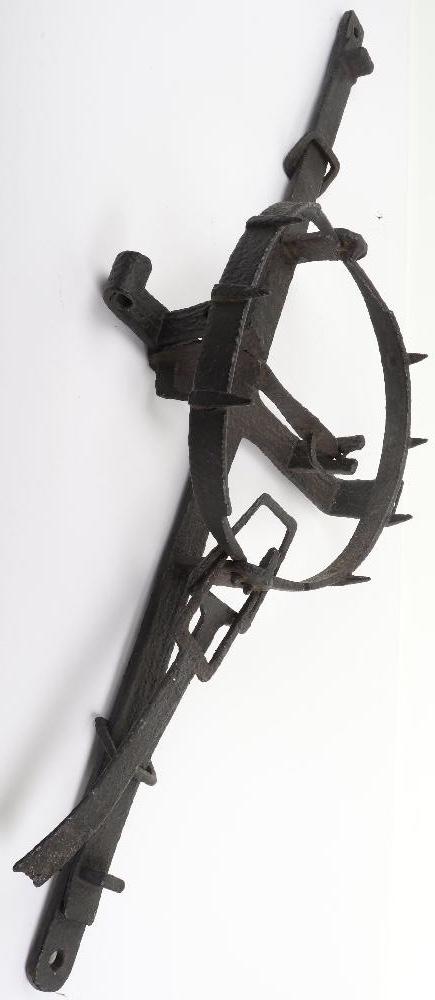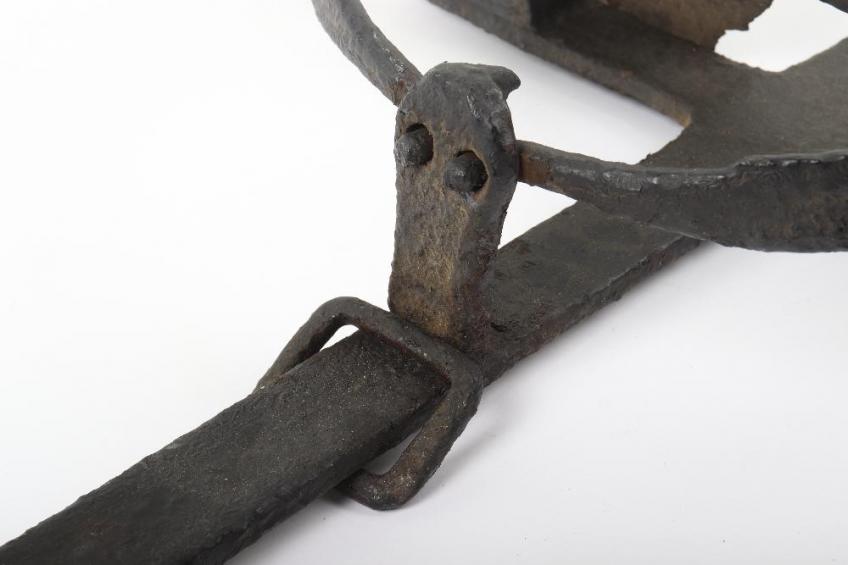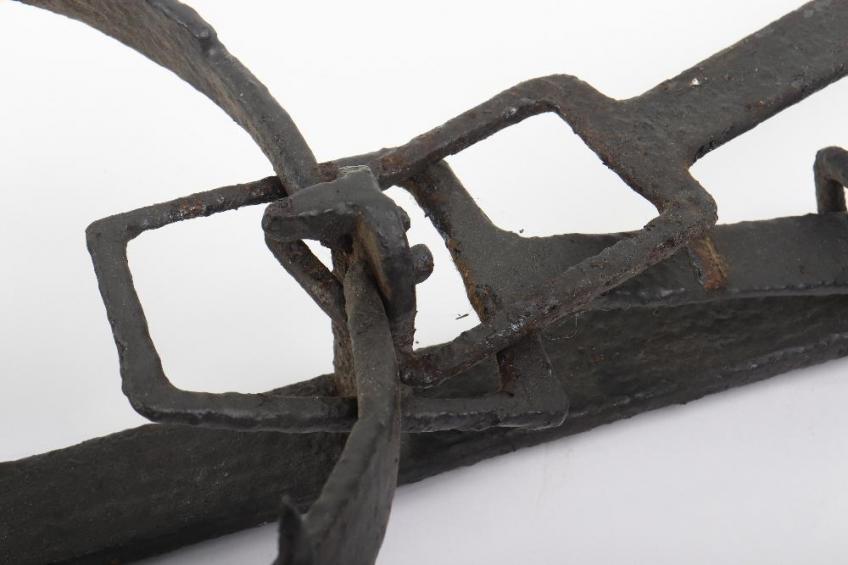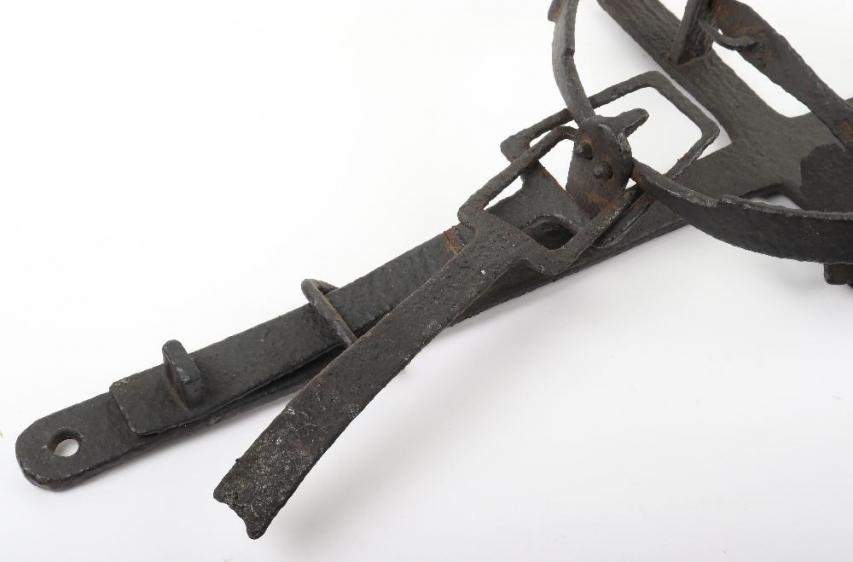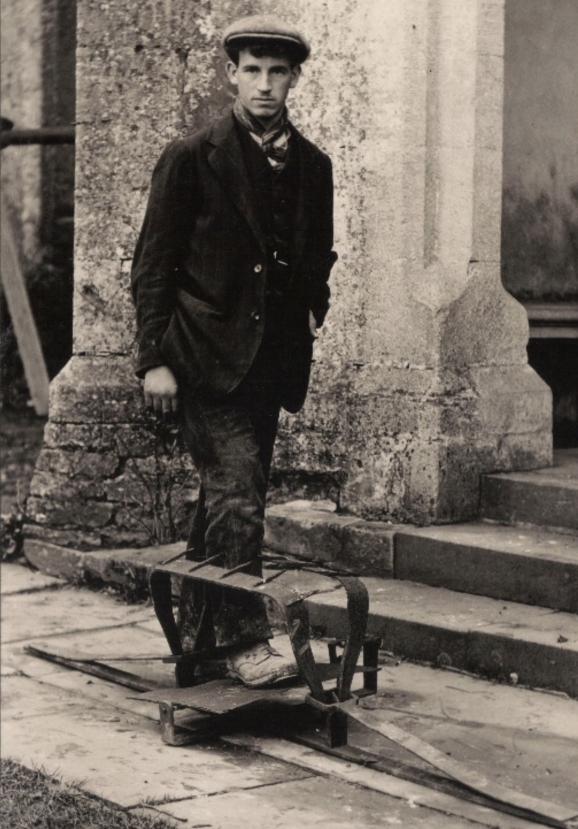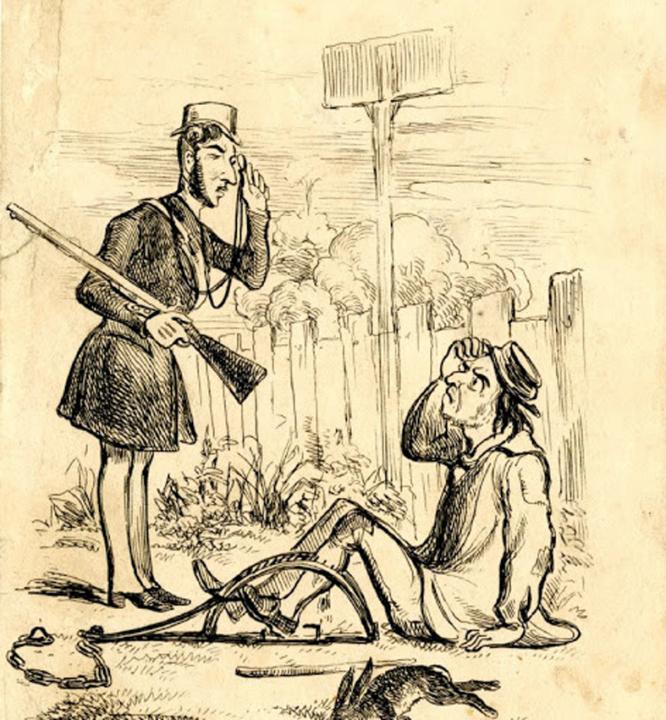A Superb & Most Gruesome Original Collectors & Conversation Piece, A King George IIIrd Man Trap "Leg Smasher" Torture Device. Only The Second Original Example Of These Incredibly Effective Anti Poaching Devices We Have Had in 10 years
A very scarce English wrought iron 'man trap', probably 18th or very early 19th century, made to most agonisingly deter trespassers and poachers from private estates.
Comprising two large sprung iron ‘jaws’, each lined with a row of prominent, interlocking saw teeth, that would be instaneously released and snapped shut with immense and rapid power, likely in a mere millesecond, by simply applying foot pressure to its trip plate. Known within the realms of tools of torment as a torture device, as it was certainly not meant to kill outright, just agonisingly maim, {that would likely though, eventually cause death but, probably weeks later} yet it would likely cause death within a few days, if, you couldn't escape its vicious jaws.
Here is a superb object to attract curiosity, great interest and thus, intriguing conversation. It would look superb mounted upon a wall {especially a castle, if you have one}. Man traps such as this have been popular for centuries as part of museum and castle armoury displays. Within the sections dedicated to early iron torture devices, and tools of torment, such as iron maidens, the scavengers daughter, gibbets, scolds bridles, ducking stools, thumb screws and finger crushers, iron pears, spiked collars, and last, but certainly not least, the rack!
In the 18th and early 19th centuries common land and shared fields were being enclosed in pursuit of more efficient and productive farming, as well as for fashionable parkland. William Cobbett (born in Farnham in 1763) wrote passionately about the resulting loss of livelihood for the rural poor and there were other protests. In 1721 a masked gang, led by 'King John' killed 11 deer at the Bishop's Park at Farnham and then rode through the market place in triumph.
In 1723 the 'Black Act' authorised the death penalty for more than 50 poaching offences. It remained law for nearly a century and when it was repealed poachers were transported instead. Landowners also used man traps, as well as spring guns and dog spears operated by trip wire, to deter poachers. Man traps were made illegal in 1826 but in 1830 a new law was passed enabling landowners to apply for a licence to use them. They were finally banned in 1861, although Gertrude Jekyll, famous ornamental garden designer writing in 1904, observed that "notices of such dangers were posted on the outsides of properties to within a comparatively recent date."
Our man trap probably dates to the late 18th to 19th century. To set it, the metal jaws were forced apart and held down by a finely balanced catch , just like a modern day mousetrap. The slightest movement of the central plate would release the catch, causing the jaws to slam shut. It is hard to imagine that the poacher would not lose his foot, it would certainly smash all the legbones in the effected area. The hooks on the plate were to hold down the leaves and grass used to camouflage the trap.
Gertrude Jekyll includes a photograph of a man trap in Old West Surrey, along with the story of how this "curious relic of cruel old days" was found - "it {the man trap} was discovered in a wood on a beautiful property owned by a lady who had four, then unmarried, daughters. Luckily no one enjoyed the obvious joke more than these dear ladies themselves."
Maximum length 113cms, jaws 37cms diameter. Fair to good condition, some old damage, now covered with old black preserving paint. Used to deter trespassers and poachers and therefore left out in the open within the landowner's property.
Deactivated, its sprung 'Trap Spring' is no longer functioning for safety.
Code: 23563
1200.00 GBP

